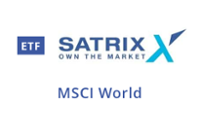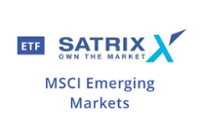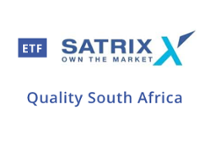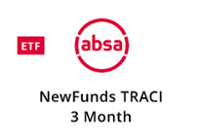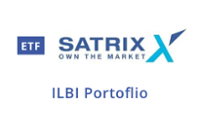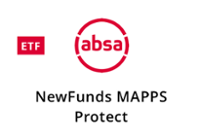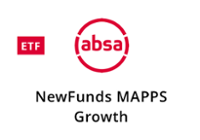Intellidex ETF Review for February 2019
We’ve seen an upbeat start to the year for global markets which warmed to the US Federal Reserve’s sentiments of a more accommodative monetary stance. Furthermore, the US earnings reporting season, which began in the second half of January, gave global equities a boost with some positive surprises, which saw US equities experiencing the best January in about three decades. And the JSE tracked the global markets upwards.
The S&P 500 climbed 7.9%, while the JSE all share index and the top 40 index – which most local funds are modelled on – rose 2.7% and 2.6% respectively. An equally-weighted JSE portfolio of non-commodity ETFs gained 1.11% in January. Funds that track local assets rose 3.11% on average. Contrarily, due to a 7.7% gain in the rand against the dollar, funds that track global markets ended 2.01%. However, if we exclude the two Cloud Atlas funds which both track African equities and severely skewed returns negatively, international asset funds would have lost 1.1%. Intellidex’s selection of ETFs, on an equally weighted basis, edged up by 0.89%.
The local view
Some positivity returned to the property sector in January after one of its worst years in recent memory last year. The best performers were four Reit ETFs which returned between 7.7% and 10.2% during January. Conversely, industrial-themed funds were the worst performers, with the NewFunds S&P GIVI SA Industrial ETF shedding 0.14%.
SA equities are showing value attributes relative to their historical average and to other emerging markets, but the drivers of our economy are moribund. President Cyril Ramaphosa’s state-of-the-nation address (Sona) didn’t do much to change Intellidex’s 2019 forecast that the economy will grow by 1.5%. Arguably, the most important Sona announcement related to splitting Eskom into three parts (generation, transmission and distribution), but it lacked specifics and gave the impression of kicking the can down a very long road.
The international view:
Although global dollar-denominated funds fared well in January, the concurrent strengthening of the rand ensured that benefits did not fully filter through to JSE funds that track international assets. However, the Sygnia/Itrix 4th Industrial Revolution fund was the star performer in the international asset category, returning 3.41% in January, followed closely by property funds. However, the Cloud Atlas funds – with African ex-SA exposure – tanked spectacularly, dipping by double-digit percentage points. Global bonds also fared poorly.
ETFs featured
International:
We also split international equities into developed and developing markets:
Developed:
We like the Satrix MSCI World Equity Feeder ETF which lost 0.81% in Rand terms in January, although its dollar return was positive. It is diversified across the globe – US, Europe, Japan, Canada and Australia –with more than half of the funds invested in US stocks. Since it is a market cap-weighted fund, its holdings reflect the dominance of US equities on the global platform. A good alternative in this category is the Ashburton Global 1200 Equity ETF but the Satrix MSCI World has a lower expense ratio.
Other more focused international equity themes include property funds and technology funds. These are worth considering for tactical or other investor-specific reasons.
Emerging:
The choice in this segment is limited to two funds: Satrix MSCI Emerging Markets and the Cloud Atlas AMI Big50. We prefer the the Satrix MSCI Emerging Markets ETF (down 0.16%) because of its extended diversification outside Africa. Unlike the Cloud Atlas fund (-15.25%) which invests in African stocks only, the Satrix fund invests in a wider range of emerging economies, including some of the fastest-growing markets such as China and India. In addition, the fund is the cheapest within its category, boasting a TER of 0.4%.
Domestic:
In a depressed economic environment with rising interest rates, the need to invest in quality companies with good debt and return metrics cannot be overemphasised. Against this backdrop, we maintain our January pick, the Satrix SA Quality ETF. The fund grew 1.95% in January.
The Satrix SA Quality ETF selects constituent companies using a set of quality metrics, including return on equity, liquidity and leverage. The top 20% of all JSE-listed companies with the highest scores based on those criteria are included in the fund and weighted by market capitalisation, but capped at 10% of the fund. Empirical evidence shows that portfolios sorted on factors such as profitability and earnings quality generate high risk-adjusted returns relative to a market portfolio. However, the size of the premium varies, depending on the metrics used to calculate the quality score.
Bonds and Cash:
This year we expect an interest rate hike and a sovereign credit downgrade (by Moody’s, to sub-investment grade) which is likely to dent the performance of South African bonds, but potentially increase the yield on cash investments. However, bonds remain an integral part of a broadly diversified portfolio.
Short term pick (less than a year):
The NewFunds TRACI 3 Month (up 0.57% in January) is a natural choice because it is least sensitive to sudden adverse interest rate movements. It is like earning interest on your cash at the bank with a minimal possibility of capital loss.
Long-term pick:
However, for a longer investment horizon, protecting your investment against inflation is paramount. A local inflation-linked bond choice is ideal because it is directly related to our local currency and purchasing power conditions.We therefore maintain our choice of the Satrix ILBI ETF (up 1.65%), which has the lowest expense ratio in this category.
Furthermore, nominal bonds add a unique risk-return dimension that differs from inflation-linked bonds and improves overall portfolio performance. As with equities, investors also need to diversify their bond portfolios internationally. We think investors can choose between Stanlib Global Bond ETF (down 7.03%) or Ashburton World Government Bond ETF (down 6.09%). They track investment-grade sovereign bonds mostly issued by the US, UK, Japan and selected European countries. However, the Stanlib Global Bond ETF has the lowest TER. Both are less than a year old.
Dividend:
If you rely on your investment income for day-to-day expenses you may want to allocate a portion of your portfolio to ETFs that have a high distribution ratio. Compared with dividend funds, property funds tend to have higher pay-out ratios.
We maintain our choice of the Stanlib SA Property ETF (up 9.11%). The Stanlib fund boasts the lowest TER in the segment. However, investors can also consider foreign property ETFs. The Sygnia Itrix Global Property ETF (up 1.44%) is the cheapest in this category.
Multi-Asset:
If you find the process of diversifying your portfolio daunting, these two ETFs do it for you. They combine equities and bonds to produce a diversified portfolio for two investor archetypes, designed to meet two different risk appetites:
Mapps Protect is more conservative, suitable for conservative, usually older, savers. Up 2.25%.
Mapps Growth suits investors with a long-term horizon. Up 2.74%.
There's plenty more from where that came from. The team at Intellidex have more insights for the month of February. To see more in-depth analysis and market insights (global and local), check out the full note here.
Background: Exchange-traded funds (ETFs)
Exchange-traded funds (ETFs) are passively managed investment funds that track the performance of a basket of pre-determined assets. They are traded the same way as shares and the main difference is that whereas one share gives exposure to one company, an ETF gives exposure to numerous companies in a single transaction. ETFs can be traded through your broker in the same way as shares, say, on the EasyEquities platform. In addition, they qualify for the tax-free savings account, where both capital and income gains accumulate tax free.
Benefits of ETFs
- Gain instant exposure to various underlying shares or bonds in one transaction
- They diversify risk because a single ETF holds various shares
- They are cost-effective
- They are liquid – it is usually easy to find a buyer or seller and they trade just like shares
- High transparency through daily published index constituents
If you thought this blog was interesting, you should also read:
Intellidex Reviews:
January 2019 Picks
Disclaimer
This research report was issued by Intellidex (Pty) Ltd. Intellidex aims to deliver impartial and objective assessments of securities, companies or other subjects. This document is issued for information purposes only and is not an offer to purchase or sell investments or related financial instruments. Individuals should undertake their own analysis and/or seek professional advice based on their specific needs before purchasing or selling investments. The information contained in this report is based on sources that Intellidex believes to be reliable, but Intellidex makes no representations or warranties regarding the completeness, accuracy or reliability of any information, facts, estimates, forecasts or opinions contained in this document. The information, opinions, estimates, assumptions, target prices and forecasts could change at any time without prior notice. Intellidex is under no obligation to inform any recipient of this document of any such changes. Intellidex, its directors, officers, staff, agents or associates shall have no liability for any loss or damage of any nature arising from the use of this document.
Remuneration
The opinions or recommendations contained in this report represent the true views of the analyst(s) responsible for preparing the report. The analyst’s remuneration is not affected by the opinions or recommendations contained in this report, although his/her remuneration may be affected by the overall quality of their research, feedback from clients and the financial performance of Intellidex (Pty) Ltd.
Intellidex staff may hold positions in financial instruments or derivatives thereof which are discussed in this document. Trades by staff are subject to Intellidex’s code of conduct which can be obtained by emailing mail@intellidex.coza.
Intellidex may also have, or be seeking to have, a consulting or other professional relationship with the companies mentioned in this report.
Subscribe To Our Research Portal
Search all research
Let Us Help You, Help Yourself
From how-to’s to whos-whos you’ll find a bunch of interesting and helpful stuff in our collection of videos. Our knowledge base is jam packed with answers to all the questions you can think of.
